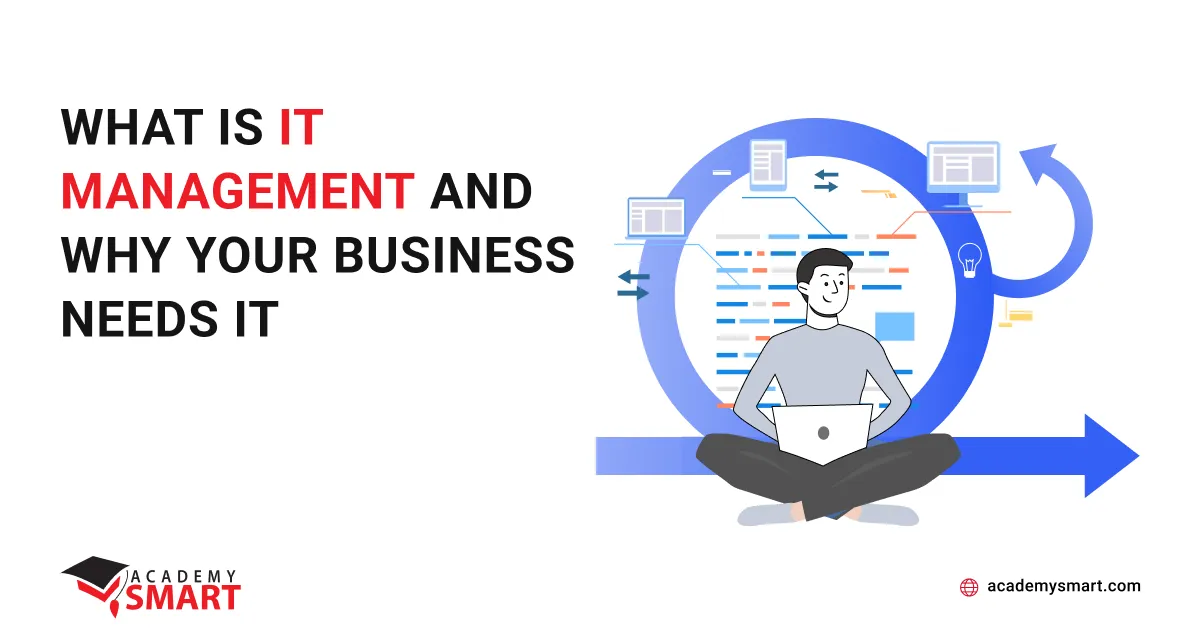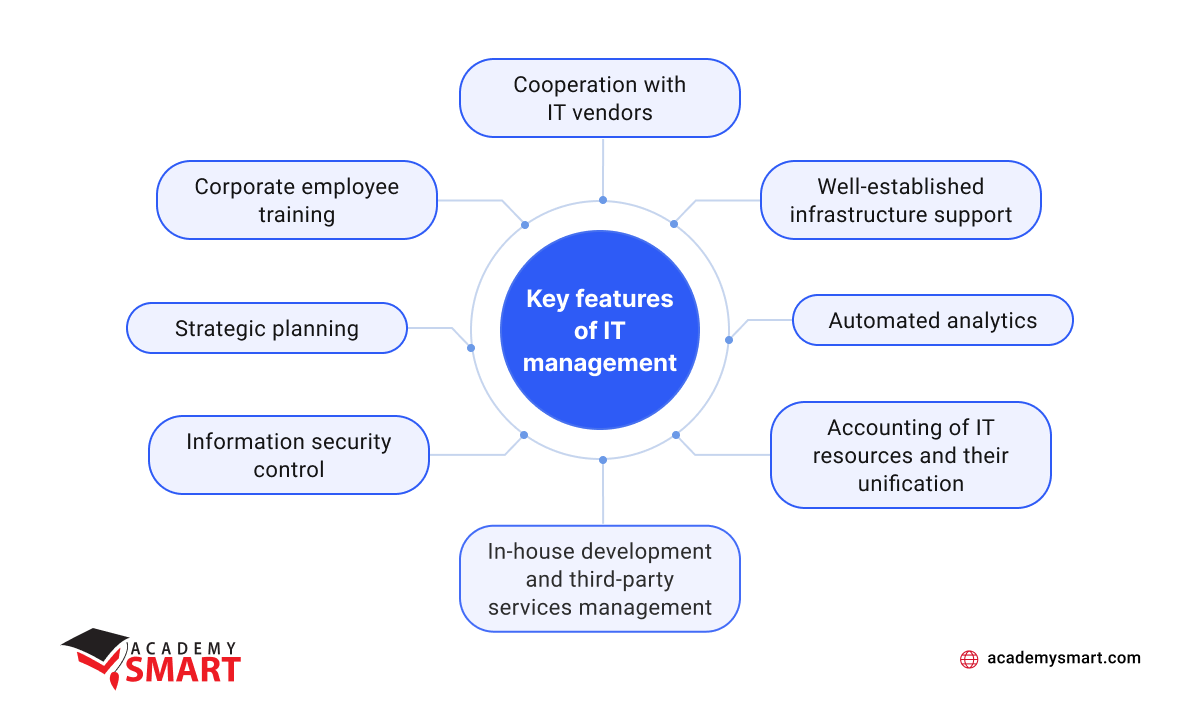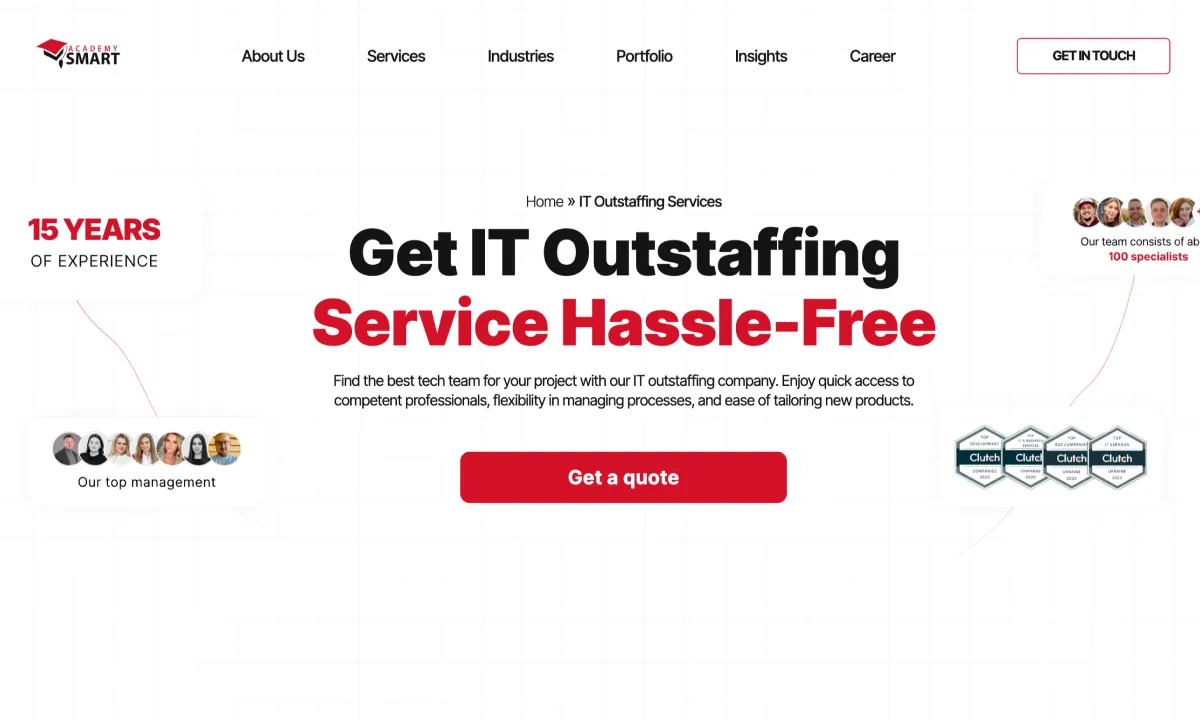
What is IT Management and Why your business needs it
Contents
In today’s online economy, information technologies have become essential for businesses of all sizes and industries. As the world becomes increasingly digitized, companies that fail to leverage IT solutions won’t likely stand the competition. Therefore, enterprise owners must pay special attention to carefully managing their IT environment, changing strategy flexibly, and mastering new technologies. In this context, effective IT management can be the key to unlocking new opportunities, improving benefits, and achieving long-term success. Read the article below to learn how to establish IT-related processes more efficiently.
What is IT Management
A wide variety of modern information technologies that can benefit an enterprise implies the need to make quality decisions regarding the list and timing of their implementation. So what is information technology management?
IT management is planning, directing, and coordinating activities within a company related to information systems it uses. Professionals working in this field must understand the strategic needs of their organization and utilize appropriate tools and technologies to meet them within budget and on time. Their direct responsibility is to identify risks and functional growth points and assess the profitability of selected technologies. The scope of IT resources they manage is vast and includes networks, hardware infrastructure, software applications, mobile devices, cloud environments, data storage, and emerging technologies.
It is a very versatile field of activity that requires IT managers to have not only strong technical expertise, a love of innovation, and the ability to analyze trends but also strong leadership skills, the ability to convey their point of view with arguments and make responsible decisions, ensuring the profit of their company. Here is a short list of the day-to-day responsibilities of IT managers in an average enterprise:
- strategic planning of the company’s information systems development and its budget;
- сonsulting and sharing expertise in a highly focused project environment using retrospective;
- regular maintenance of existing IT infrastructure, its updating, and troubleshooting;
- control over the security of the company’s IT space;
- tracking current technological trends and competitor analysis;
- project management for the development of new software and web applications;
- resolving conflict situations within the team and with the external relations;
- selection and training of personnel.
Proper management of information technology allows you to make timely decisions that avoid high costs due to technical problems and failures and provide a reliable basis for further improving your products and services and increasing profits. Without a doubt, all our customers have made the right choice by entrusting the development of their software to Academy Smart because the skillful application of technology, converted into tangible benefits, is the essence of the meaning of the term IT management.
Why is IT Management important
Well-established IT management ensures that technology is aligned with the business strategy and that technology investments are made wisely generating the maximum value for the organization. It helps to optimize business processes, enhance productivity, improve data security and privacy, and increase customer satisfaction.
- IT management provides valuable insight and information that enables organizations to make informed decisions about technology adoption, investment, and innovation.
- With adequate information technology management, organizations can ensure that their IT resources are used efficiently, maximizing their value and minimizing unnecessary expenses.
- IT management can improve productivity by streamlining processes, automating repetitive tasks, and providing employees with the tools to do their job effectively.
- It can give organizations a competitive advantage by enabling them to leverage technology innovatively, respond quickly to market changes, and stay ahead of competitors.
- IT management is vital for ensuring business continuity during disasters, cyber-attacks, or other disruptions that could disrupt operations and cause significant financial losses.
- It makes it purposeful to communicate with third-party IT product and service providers, oversee their performance, migration from one vendor to another, and manage projects with other stakeholders.
- With proper IT management, companies can enhance customer experience by providing reliable and secure technology, promptly delivering products and services, and quickly resolving issues.
Depending on the size of the company and the scope of its activities, the size of the IT management team can vary significantly. However, no matter how compact this department is, it performs the functions of a business analyst, project manager, system administrator, cybersecurity specialist, trainer, and others.
Creating your software product often leads to the emergence and debugging of information technology management processes with the assistance of a team of developers working on its creation. Of course, delegating the tasks of particular or whole managing the IT sector of the company to specialized companies is widely practiced now. Some cases from our portfolio are clear examples of that.

Projects, we delivered
Effective Information Technology Management: 8 key features
Effective IT management is crucial for businesses to operate successfully and stay competitive in today’s technology-driven world. With so many different aspects to consider, knowing where to focus your efforts can be challenging. Below, we will outline eight critical features of information technology management that can help businesses make right decisions and ensure they get the most out of their IT investments.
1. Strategic planning
Strategic planning creates the preconditions for the effective use of information technology in achieving the company’s business goals. The main tasks of the company’s IT management team at the planning stage include:
- Define strategic aims and objectives, directions of corporate IT resources development, terms and budgets for specific operations and a whole in the medium and long period.
- Develop and implement a strategy for creating and integrating new software products with existing technology systems.
- Design infrastructure and application maintenance diagrams to ensure the IT environment’s stability, performance, and security.
2. Automated analytics
To effectively manage the company’s information assets, the management team needs to have well-established feedback from corporate users and consumers of products and services. That is necessary to evaluate the state of technical systems and improve the quality of IT department services and customer satisfaction timely.
It is crucial that reports from various departments and technical services arrive on schedule and centrally, allowing analysts to get a holistic picture and identify areas for improvement. Automating this process will enable you to timely signal the imbalance of procedures, technical malfunctions, deadlines, etc.
By using advanced algorithms and data visualization tools, IT managers can gain insights into the performance of various systems and applications, detect anomalies, and make predictions about future trends. Additionally, automated analytics can reduce human errors and bias in data analysis, thereby improving the accuracy and reliability of decision-making.
3. Accounting of IT resources and their unification
The quality management of the company’s IT environment is based on the knowledge of what resources are at the disposal of its employees, what functions they perform, how they comply with corporate requirements and standards, and how up-to-date their status is. Maintaining a comprehensive inventory of IT means is crucial for budgeting and resource allocation. By knowing what hardware and software resources are available and how they are being used, IT managers can prioritize investments in technology and allocate resources more effectively.
On the one hand, the constant accounting of available technical means ensures timely updating of the material and software components and identifies conflicting and potentially vulnerable information systems. On the other hand, it avoids using the so-called “shadow IT,” which overloads the corporate infrastructure and is a potential source of leakage of critical confidential data.
The unification of information technology tools, together with a well-functioning system of roles and access levels, allows the company to rationalize the interaction of employees and consumers with technical systems and ensure a decent level of data security. This approach also enables the IT team to provide better support to end users, reducing downtime and improving user experience.
4. Well-established infrastructure support
It refers to maintaining and optimizing the company’s IT infrastructure, including hardware, software, networks, and other technical resources. The technology component should be constantly monitored and updated to meet the organization’s changing needs.
Infrastructure support involves establishing system maintenance and troubleshooting protocols, such as regular backups, application updates, and system monitoring. It also includes developing a framework for supporting end-users, such as helpdesk support, IT training, and other resources that enable employees to use technology more effectively.
5. In-house development and third-party services management
A company often needs to develop its own software to solve business problems. It usually happens because the existing applications on the market do not cover all varieties of the business needs, or their cost significantly exceeds the profit, and it is cheaper to develop a suitable solution itself. Of course, creating your software product requires expertise, know-how, specialized technical tools and time for market research, conceptualization of the product idea, prototyping, coding and testing, debugging and optimizing the user experience.
Since only some companies have an in-house team of programmers with the necessary qualifications, the balance between internal processes for creating a software product and using third-party services must also be properly managed to provide the cost-effectiveness, quality, flexibility and scalability that are needed.
To synchronize internal efforts and professional assistance from outside, the IT management team creates a product development roadmap that regulates the goals, interactions, and release dates. This document helps to maintain focus on the product’s key features, estimate the time and costs of development, identify dependencies between different teams, and mitigate potential risks, saving time and resources.
6. Information security control
This feature of information technology management is critical, especially in today’s digital age, where organizations increasingly rely on technology to carry out their operations. Effective IT security measures are necessary to protect the company’s sensitive information from unauthorized access, disclosure, or modification.
It includes the development and implementation of comprehensive information security policies and procedures, such as access control, data backup and recovery, encryption, firewalls, intrusion detection and prevention, and security awareness training, as well as ongoing monitoring and analysis of the effectiveness of these activities. It involves identifying potential risks and vulnerabilities, developing mitigation strategies, and continuously improving security measures to keep up with evolving threats.
Additionally, IT management must ensure compliance with relevant laws, regulations, and industry standards related to information security, such as the General Data Protection Regulation (GDPR) and the Payment Card Industry Data Security Standard (PCI DSS), for example. Non-compliance can lead to significant legal and financial consequences for the company and damage to its reputation.
7. Corporate employee training
Corporate employee training is an essential IT management feature that is often overlooked and underestimated. But it provides employees with the necessary knowledge and skills to effectively and securely use the company’s information systems and technology.
This training covers the proper use of software and hardware, data security, and compliance with company policies and regulations. By educating employees on best practices for information technology use, the IT management team can reduce the risk of data breaches, improve the efficiency of technology usage, and increase overall productivity.
8. Сooperation with IT vendors
It involves establishing partnerships with external technology providers. Practical collaboration with them helps companies stay up-to-date with the latest technology trends, optimize costs, and reduce risks associated with technology adoption.
The IT management team collaborates with vendors to evaluate, select, develop, and implement hardware, software, and cloud solutions that meet the company’s needs. The partnership also includes managing service level agreements (SLAs) and contracts and maintaining effective communication channels to ensure that vendors respond promptly to requests and provide timely releases and support.

Main features of effective IT management
How Academy SMART can help you
We have created complex custom software applications for large enterprises for over 13 years. Our programmers have extensive experience working as dedicated teams of outsourced contractors and outstaffing employees as part of the customer’s internal development teams. Our Project Managers and Technical Leads have a wide range of expertise in managing IT resources and communicating effectively with clients to create and enhance software products, migrate to the cloud, and support existing business apps.
We offer professional support in evaluating and translating your strategic ideas into quality software, services of the best programmers at prices in Eastern Europe, individual approach, and attention to your needs. Contact us, and we will start a dialogue immediately.
Information Technology Management: Frequently Asked Questions
What field is IT management?
IT management focuses on the planning, implementing, and maintaining information technology systems within an organization.
What is the aim of IT management?
IT management aims to plan, organize, and control information technology resources to meet an organization’s strategic goals.
Book a free consultation

Reach out to start talking today!










